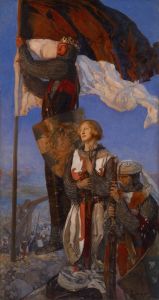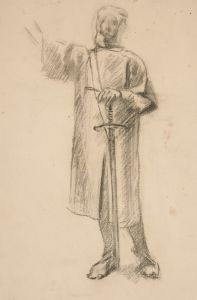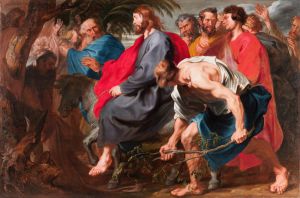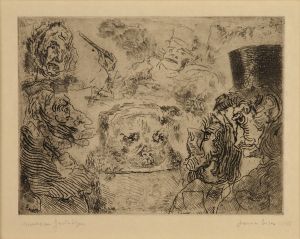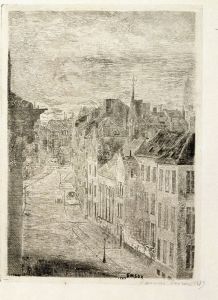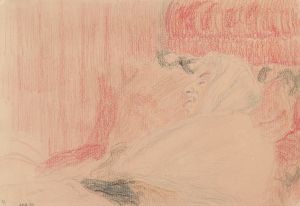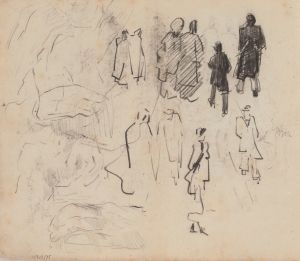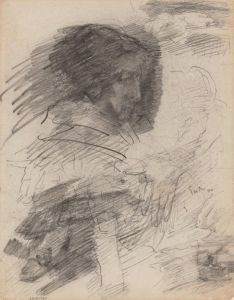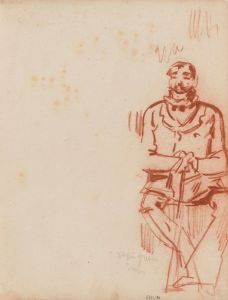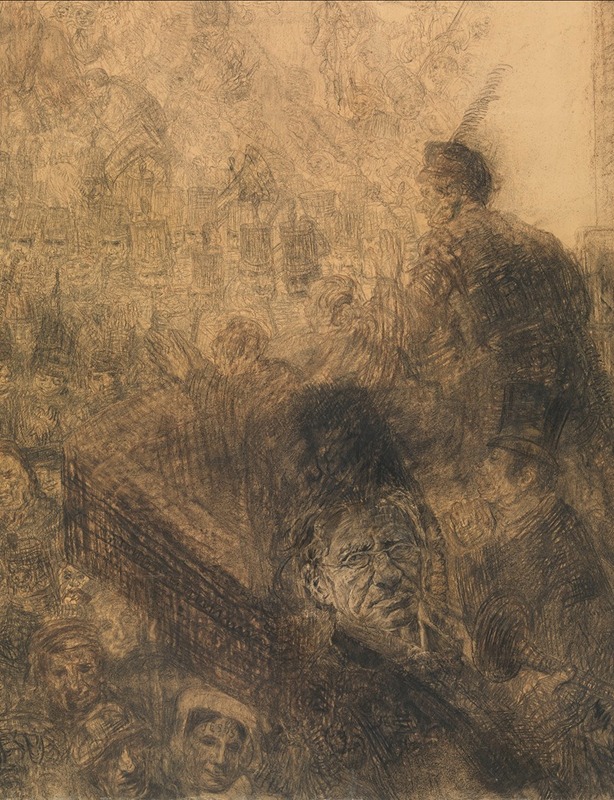
Christ’s Entry into Jerusalem
A hand-painted replica of James Ensor’s masterpiece Christ’s Entry into Jerusalem, meticulously crafted by professional artists to capture the true essence of the original. Each piece is created with museum-quality canvas and rare mineral pigments, carefully painted by experienced artists with delicate brushstrokes and rich, layered colors to perfectly recreate the texture of the original artwork. Unlike machine-printed reproductions, this hand-painted version brings the painting to life, infused with the artist’s emotions and skill in every stroke. Whether for personal collection or home decoration, it instantly elevates the artistic atmosphere of any space.
"Christ's Entry into Jerusalem" is a painting by the Belgian artist James Ensor, created in 1889. Ensor, a prominent figure in the Symbolist movement, is known for his unique and often provocative style, which combines elements of satire, grotesque imagery, and vibrant color.
The painting depicts the biblical scene of Jesus Christ's triumphant entry into Jerusalem, an event celebrated on Palm Sunday in the Christian tradition. Ensor's interpretation of this scene is distinctive and reflects his characteristic approach to religious and historical subjects. The composition is crowded with figures, creating a sense of chaos and movement. Ensor's use of bright, almost garish colors adds to the intensity of the scene.
In "Christ's Entry into Jerusalem," Ensor places Christ at the center of the composition, riding a donkey, as described in the Gospels. He is surrounded by a throng of people, some of whom are waving palm branches, a traditional symbol of victory and peace. The faces of the crowd are rendered with exaggerated expressions, ranging from adoration to hostility, highlighting the mixed reactions to Christ's arrival.
Ensor's work often includes elements of social commentary, and "Christ's Entry into Jerusalem" is no exception. The painting can be seen as a critique of contemporary society, with the crowd representing various facets of human nature and societal behavior. The exaggerated and often grotesque faces of the figures may suggest the artist's view of the hypocrisy and superficiality he perceived in the world around him.
The painting is also notable for its technical aspects. Ensor's brushwork is loose and expressive, contributing to the dynamic quality of the scene. His use of color is bold and unconventional, with a palette that includes vivid reds, blues, and yellows. This approach to color and form was influential in the development of modern art, and Ensor is often regarded as a precursor to Expressionism.
"Christ's Entry into Jerusalem" is housed in the J. Paul Getty Museum in Los Angeles, California. It is considered one of Ensor's masterpieces and is an important example of his mature style. The painting reflects Ensor's deep engagement with religious themes, his innovative use of color and form, and his critical perspective on society.
James Ensor (1860-1949) was a Belgian painter and printmaker, associated with the avant-garde group Les XX. His work spans a range of subjects, from still lifes and landscapes to macabre and fantastical scenes. Ensor's unique vision and technical skill have earned him a significant place in the history of modern art.
In summary, "Christ's Entry into Jerusalem" by James Ensor is a significant work that combines religious iconography with social critique, rendered in a bold and expressive style. The painting remains an important piece in the study of Symbolism and the development of modern art.





